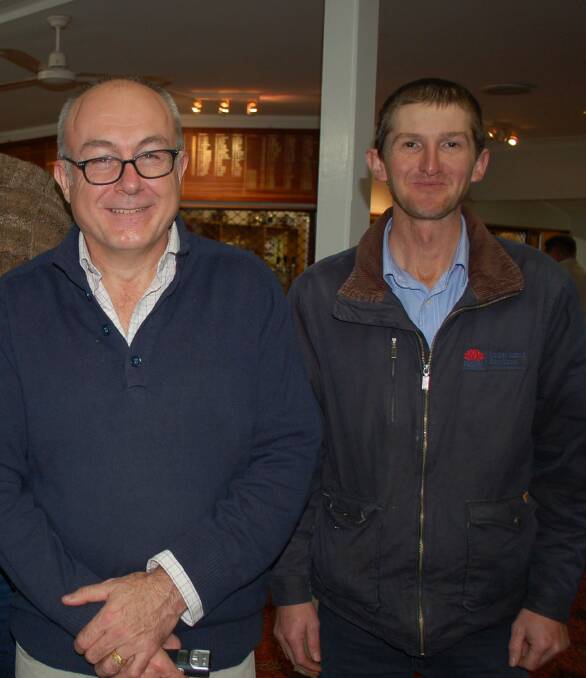The only way is up for Australian red meat prices according to industry export market analyst Simon Quilty, managing director of MLX Pty Ltd, a company which specialises in risk management and brokering beef swaps, primarily between Australia and the US.
Subscribe now for unlimited access.
$0/
(min cost $0)
or signup to continue reading
Mr Quilty was the guest speaker at a series of 'Mapping Australia's Livestock Future' workshops hosted by Northern Tablelands Local Land Services last month and provided insight into the forecasts for livestock prices in the coming years at events in Walcha, Tenterfield, Glen Innes and Inverell.
Mr Simon Quilty visited the region in July last year and predicted that the low in Australian livestock prices would occur in October 2018.
“In reality, the low was a 450 ac/kg carcase weight in August 2018 and the second low was 480 ac/kg in October 2018,” Mr Quilty said.
“It was the rain in October across the Eastern Seaboard that lifted prices.”

Mr Quilty said he is confident this will be the low for many years to come.
“The strong global prices that I spoke of last year as part of the super demand cycle were the reason these prices did not fall any lower,” he said.
Australia's livestock industry is about to move into a second cattle cycle according to Mr Quilty – back to back with the last.
He predicts that in six months Australia is likely to see cattle values approximately 12-16 per cent higher than they are now -with or without rain. He also says the Eastern Young Cattle Indicator (EYCI) value will be in the 570-600 ac/kg price range by June 2019.
The lower the herd size the bigger the rebound in cattle prices
- Simon Quilty MLX CEO Pty Ltd
For this forecast, Mr Quilty assumes a two-year drought in his analysis because he says that is the average length of a drought based on past history.
One of the key consequences of drought is a fall in the cattle herd size and NSW producers are continuing to reduce the female herd signalling on going liquidation.
“I expect that by mid-2020 the Australian herd would have fallen to 26.2 million head or a fall of 7% based on this year’s estimate of 28.15 million head,” Mr Quilty said.
“This would put the herd at a 30 year low.”
And what will happen when the drought breaks?
Quilty highlighted that in the drought of 2013-14, when rain eventually came cow prices doubled in value within five months. He believes a cow price increase of 25 to 50 per cent is possible and farmers can expect a similar pattern of price spikes in the first five months following the current drought.
“The lower the herd size the bigger the rebound in cattle prices,” he said.
“When the drought breaks and the herd cycle moves into its next phase cattle prices could potentially reach 800 ac/kg by early 2021. The peak of the last cattle cycle was October 2016 at 725 ac/kg.”
Strong global prices are the key to strong Australian cattle prices in the next four years Mr Quilty stressed, and the following factors will drive up global beef prices:
- Tighter cumulative total cattle numbers in key demand countries such as Japan, Korea, China, US and Indonesia
- Tighter cumulative total cattle numbers in key foot and mouth disease free countries such as Australia, New Zealand and the US
- Competing meats like chicken not impacting beef and sheep meat prices for many years to come.
- The impact of African Swine Fever in China that will see a global tightening of proteins as China liquidates its pig herd in an effort to bring this disease under control.
Simon's views on lamb were equally optimistic over the next four years highlighting that many of the same market forces that impact global beef prices are also influencing lamb prices.

